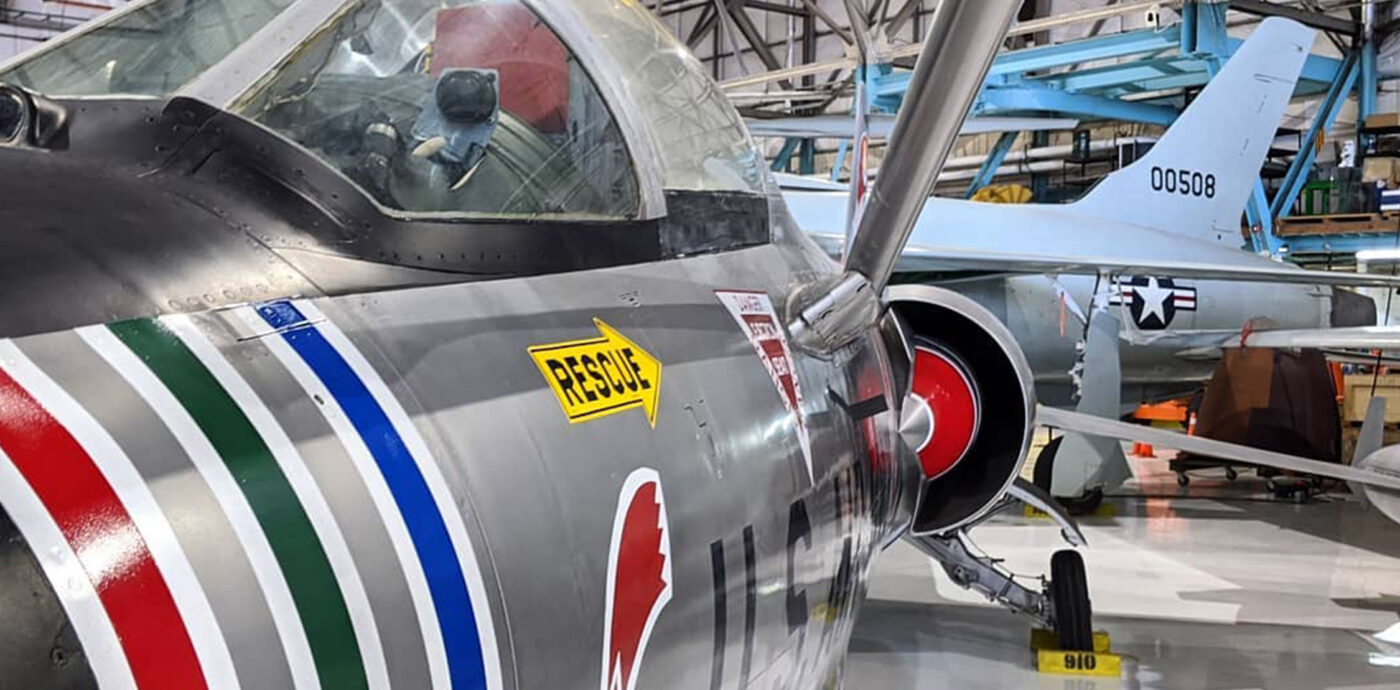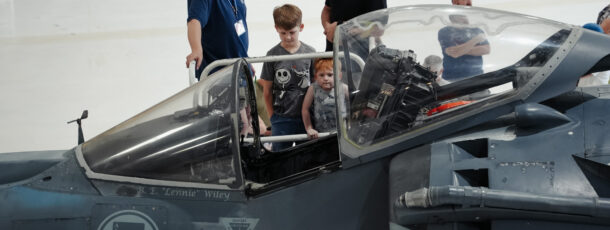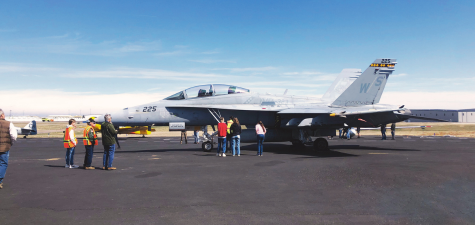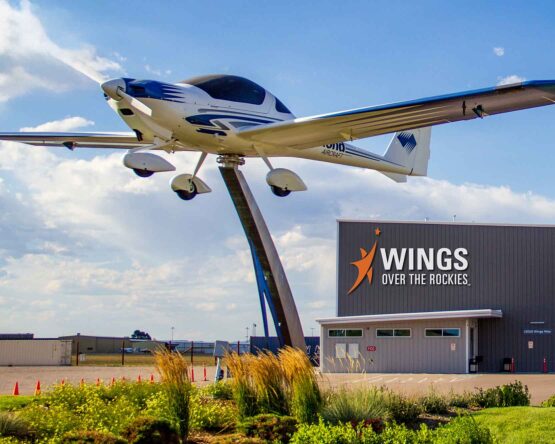When Kelly Johnson and his engineers at the secret “Skunk Works” designed the F-104 in 1952, they wanted a high-altitude interceptor with lots of speed, a high rate of climb, and a quick reaction time. Those objectives helped guide them to the classic shape of this Cold War fighter. The Air Force didn’t even know they needed an airplane like the F-104… Lockheed submitted their unsolicited proposal, THEN the Air Force wrote the operational requirements!
The F-104 Starfighter is a high-performance interceptor that served the U.S. Air Force during the 1950s and 1960s. Designed on feedback from U.S. pilots in Korea, the F-104’s lightweight design emphasized maneuverability in early models, but its high performance demanded precise, careful piloting, and it had a high accident rate. The F-104A set altitude records of 91,243 feet in 1958 and 103,395 feet in 1959. In 1958 Lockheed introduced a fighter-bomber version, the F-104C.
The one at the Wings Over the Rockies Museum is an F-104C fighter-bomber, one of two aircraft in the Wings collection that have flown in combat. It flew with the 435th Tactical Fighter Squadron from Udorn Royal Thai Air Force Base during the Vietnam War.
This airplane is on loan from the National Museum of the US Air Force.
Aircraft specifications:
Wingspan: 21 ft 9 in
Length:54 ft 8 in
Maximum speed: Mach 2.2, or 1,450 mph (2,334 km/h) above 40,000 ft (12.2 km)
Initial climb rate: 48,000 fpm (244 m/s)
Crew: One
Engine: General Electric J-79 turbojet
Thrust: 10,000 lbf (44.5 kN), 15,800 lbf (70.3 kN) with afterburner
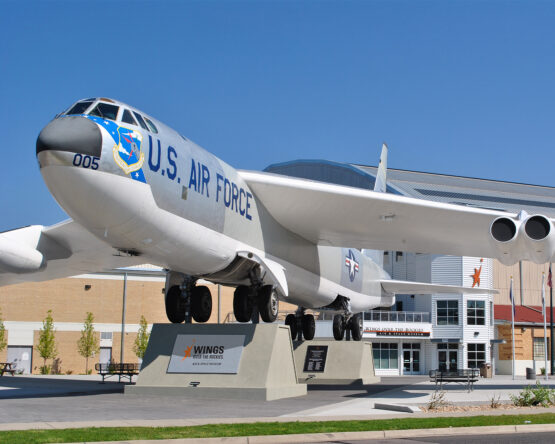 Air & Space Museum
Air & Space Museum












